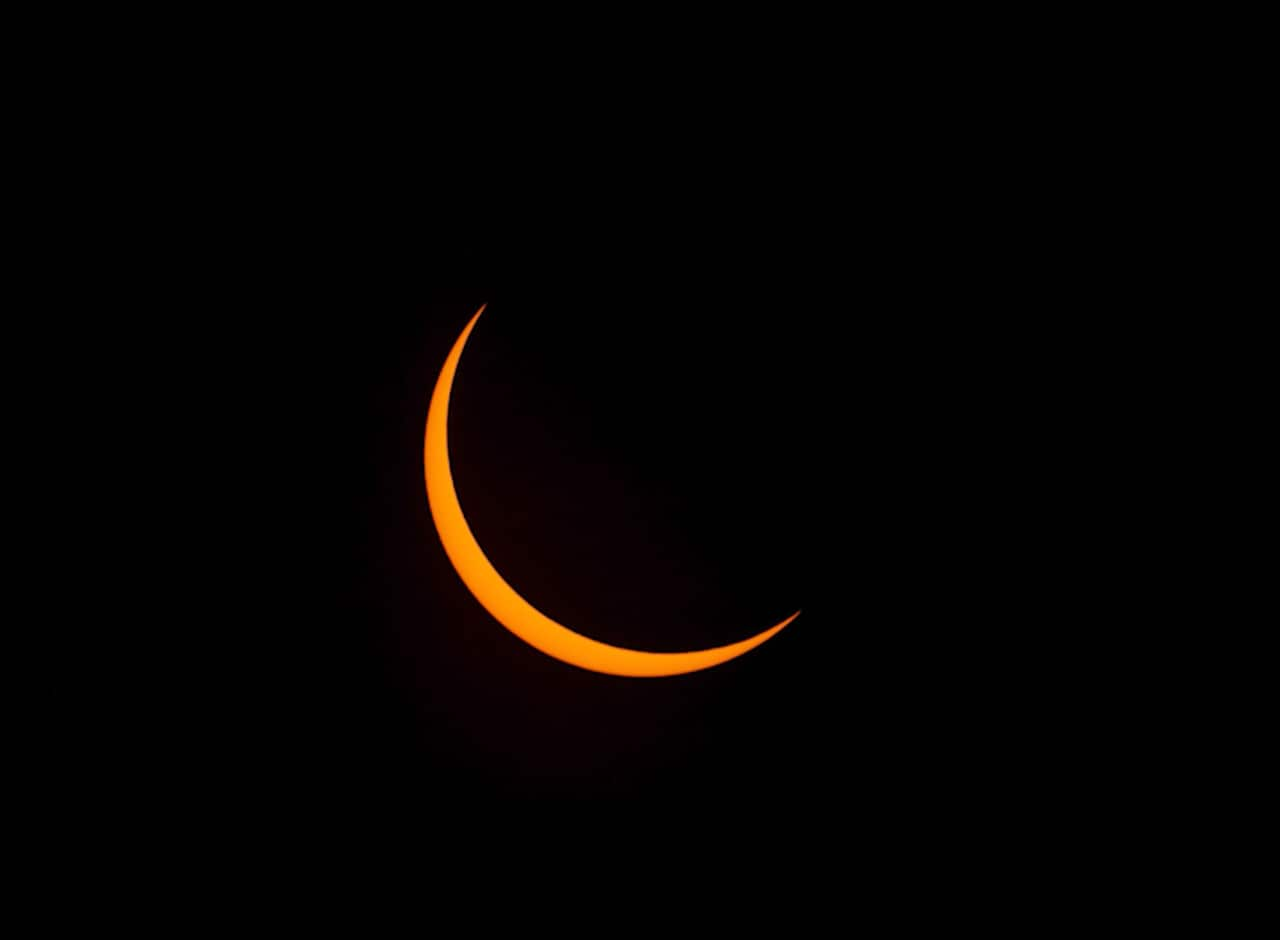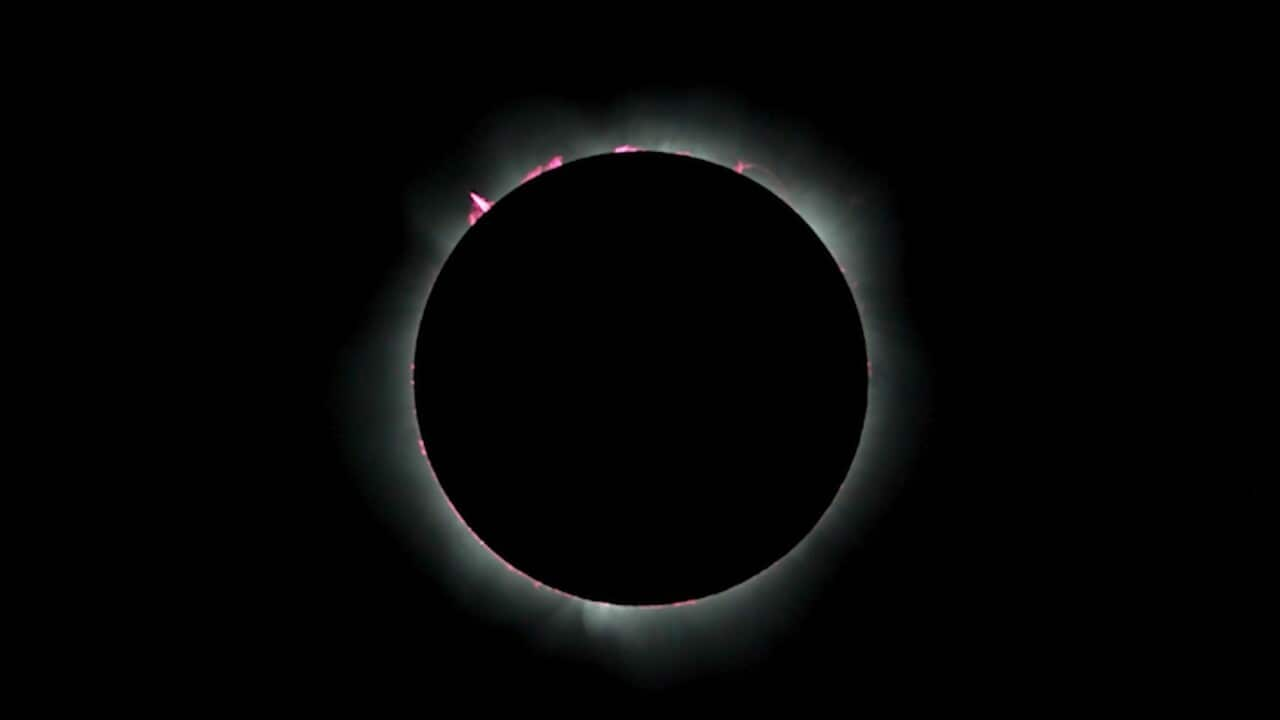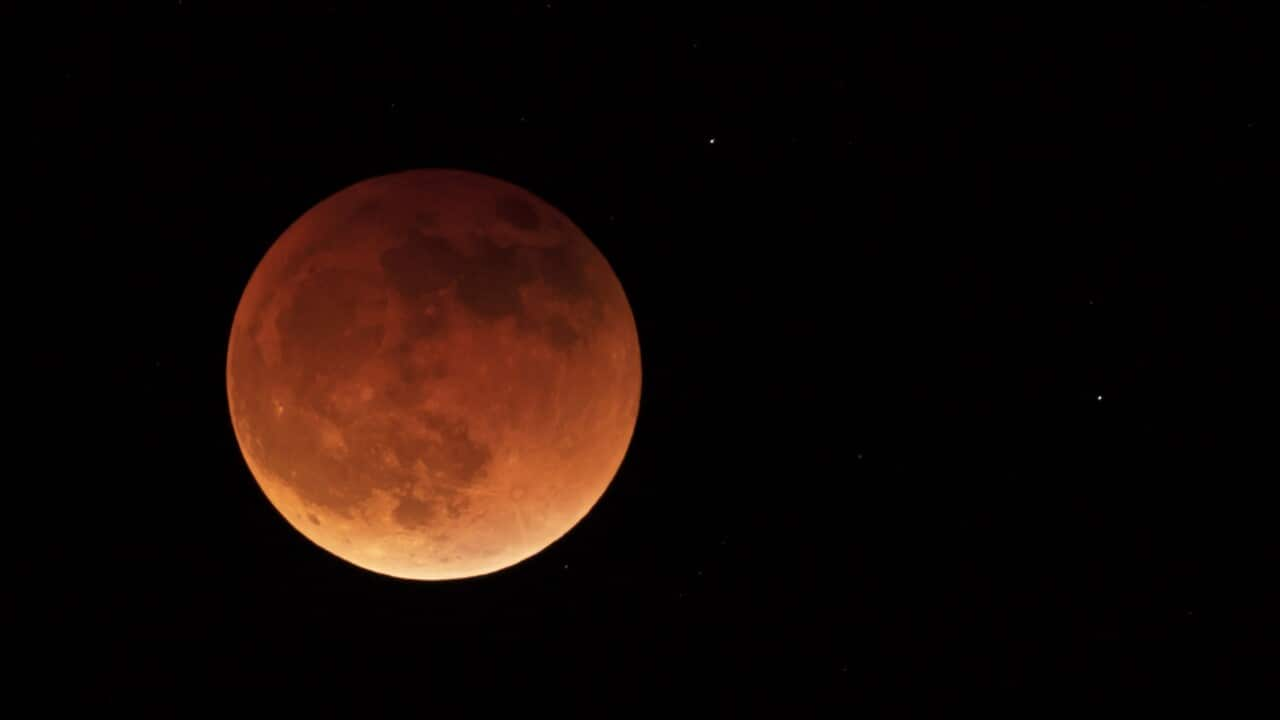People on Thalanyji Country were treated to a spectacular display on Thursday, as a total solar eclipse passed over Western Australia's north-west cape.
The cosmic dance between sun, moon and earth thrust the small town of Exmouth into an eerie midday darkness, prompting shouts of joy and surprise amongst the expectant observers, many of whom had travelled internationally to attend.
While other cities around the continent saw partial eclipses, Exmouth was privy to the sight of the full event: wisps of the sun's million-kilometre corona dancing above the halo of the darkened moon.
It’s a rare sight, and one that gets astronomers like Wiradjuri woman Kirsten Banks very excited, but only if they're in the right place.
"It was very rainy in Sydney. So I personally didn't see anything with my own eyes, unfortunately," she told NITV.
"But it was good weather in Exmouth, it would have been fantastic! And I'm very jealous of everyone who is over there now seeing it with their own eyes."
As opposed to lunar eclipses, which are more common, solar eclipses such as Thursday's only track a very small path across the Earth's surface.

People gather ahead of a total solar eclipse at a viewing site. Protective eyewear is still necessary to view the event. Source: AAP / AARON BUNCH/AAPIMAGE
"I've been seeing so many fantastic photos and videos on Twitter, and it looks like it was a really good time," said Ms Banks.
The celestial events are not limited to the west coast however: such eclipses can occur in many places across the globe.
"So there are different cycles that the moon and sun go through when it comes to solar eclipses," explained Banks.
'We've had the solar eclipse going through Exmouth this time, but in July 2028, we'll have a total solar eclipse going right through Sydney."
Few and far between

Aboriginal cultures made lore regarding the movement of the stars, sun and moon. Credit: MICHAEL GOH/PR IMAGE
Pre-invasion Aboriginal cultures across the continent were home to incredibly skilled astronomers, and as they did with the earth.
However, the rarity of solar eclipses means that they were likely unexpected.
"It probably would have been quite a shocking thing to experience," said Ms Banks.
"As far as I'm aware that Indigenous peoples were able to... it's a lot easier to predict [lunar eclipses] than it is having the moon completely covered the sun perfectly.
"The same solar eclipse won't occur at the same place for about 6000 years."
The cultural astronomical practices of the various Aboriginal and Torres Strait culture were as numerous as the communities themselves.
Events such as eclipses were sometimes described with the human characters of man and woman depicting the moon and sun, respectively.
"So there are lots of groups who have different lore style, or they talk about the sun in the moon chasing each other," said Ms Banks.
"And when they come together, that is when they come together for the first time in however long it is for even for specific communities."











